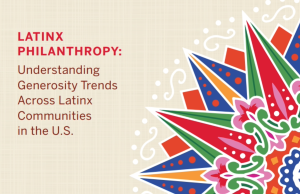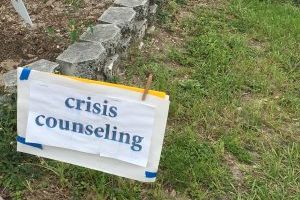Three out of four (75%) of people consider themselves “generous.” Donating to nonprofits, along with everyday acts of kindness and longer-term commitments to good works, are among key ways that they express generosity, according to a new study.
When small funders do not give, chances are it is because they are feeling a financial pinch. Just fewer six in 10 (57%) people surveyed cited money constraints as the top reason they did not give, and nearly seven in 10 said they did not give as much as they would like due to a lack of finances after taking care of their families.
That’s data from How and Why We Give, a report from The Generosity Commission that combines analysis of national media, a nationwide opinion survey and focus group research on giving and volunteering.
When donors did give, the main impetus came from personal convictions, as opposed to outside influences. Nearly half (47%) said the primary reason they gave was to further a cause they care about deeply. Almost three-quarters (73%) mentioned a deep desire to help people in need and 61% said giving and volunteering was key to how they express their values. Only 6% mentioned tax breaks as a motivation, while just 3% professed impressing others is a strong reason.
Appeals to the heart and lobbying for support of causes might spur donations, but within focus groups participants rejected messaging that played to a sense of obligation or civic duty. Jingoism, too, struck a sour note. People did not want to be told that generosity was a uniquely American characteristic. Messaging that had a broader, general-good-for-society tone resonated better with these individuals.
People within nonprofit marketing departments should also get into specifics in their appeals, particularly regarding the impact of donors’ contributions. Funding, volunteering, and other forms of giving, such as donating clothes, food and other resources, have tangible impacts on a nonprofit’s mission. Donors want to know about these impacts, and to be reassured their contributions are making a difference. This is especially true when it comes to financial contributions: two-thirds (67%) were interested in knowing how their money would be spent, with assurances it would not be wasted.
If organizational managers want to focus on fundraising, individuals within their development departments should concentrate on removing as many barriers to contributing as possible — and then remove more. Even asking a potential funder to fill out a donation card and place it in a pre-addressed, prepaid envelope could be a step too many, especially among a population that feels overwhelmed about finding donation channels, as 44% of those surveyed do. These people can be spurred to give in nearly frictionless ways, such as rounding up purchase prices at a cash register or purchasing items that have donations baked into the purchase price.
Many of the survey and focus group findings were reflected in the ways people engaged with news-related and social media conversations. Interactions that relied on language geared toward emotional responses and accounts of how donations specifically benefitted recipient populations generated high levels of reach and engagement. Often the most relatable stories included those of smaller donations or efforts, as opposed to unrelatable contributions from mega-donors.
The social media- and news-related findings came with a caveat: some movements, civil actions and protests over controversial issues generated polarized conversations. While some of this media led to support for the issues, there was a strong undercurrent of discussion regarding how funding for these causes was used, or whether there was enough oversight of donated funds.
In general, however, people responded well to stories of altruism and impact, especially when the impact was detailed. As the report authors noted, “Out of all the reasons for generosity, people were most responsive to and moved by stories about generosity that supported the safety and protection of others.”
A full copy of the report is available here: https://bit.ly/3MJCVio












